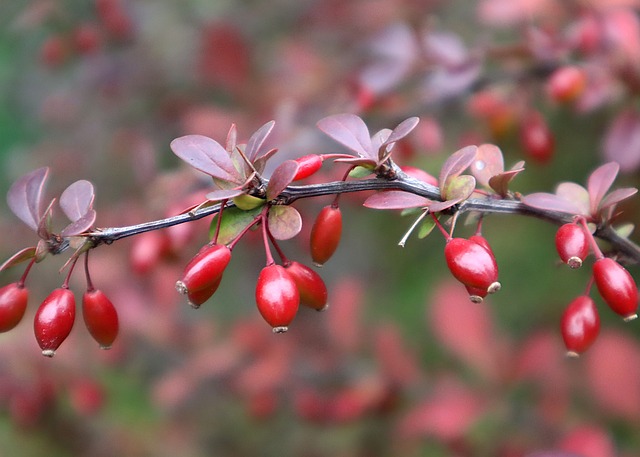
What do Norway maple, Japanese barberry, winged euonymus, autumn olive, purple loosestrife, Japanese honeysuckle, and multiflora rose have in common? They are all considered invasive species. They are exotic plants not native to our area that were introduced for ornamental purposes but have gotten out of control. Invasive plants cause serious ecological harm, taking over whole habitats and choking out native species. Nationwide, three million acres are lost each year to these aliens. About half of the species on the Federal Endangered Species List are there in part because of invasive species.
So why do people use them? Some inherited them when they bought their property. For example, multiflora rose (rosa multiflora) was brought over from Japan back in 1886 as a rootstock for cultivated roses. In the 1930’s, the U.S. Conservation Service encouraged farmers to plant it to control soil erosion. The nursery industry also promoted the shrub as a “living fence,” to control livestock. It was even touted by wildlife managers as late as the 1960’s as an excellent source of food and cover for wildlife, and is now very common in Woodstock.
Invasive plants share five key traits:
- A single purple loosestrife plant can produce as many as 2.5 million seeds a year.
- Very effective dispersal mechanisms. Phragmites (Common Reed) produces copious amounts of seed that is dispersed by wind, water, and wildlife.
- Rapidly and easily established. The same qualities that make Norway maple a popular ornamental – rapid growth in a variety of conditions, hardiness, and resistance to drought and pollution – also make it an effective invader.
- Grow rapidly. Multiflora rose can grow one to two feet a week, forming impenetrable thickets of thorny stems.
- Aggressive competitors. When Eurasian watermilfoil infests a pond, it wipes out native species, prevents sunlight from reaching underwater species, and may even change water chemistry.
Although it is now illegal to propagate or sell multiflora rose in many states, some invasives are still for sale and are readily available – like winged euonymus (also called Burning Bush) and Norway maple. Some people plant them because they like the way they look. However, if they realized the ecological issues associated with their use, they would probably avoid them like the plague.
There are alternatives available, some of which are native plants. For example:
- Red maple, sugar maple, and silver maple can be used in place of Norway maples.
- Japanese barberry can be replaced with winterberry, black/red chokeberry, maple leaf viburnum, highbush cranberry viburnum, or pasture/Virginia or swamp rose.
Instead of winged euonymus, try highbush blueberry or red chokeberry.
If you already have invasive species on your property, help control further spread by taking immediate action. Learn to identify them. The type of action required depends on the species, and the size and nature of the infestation. For example, light infestations of bush honeysuckle can be cleared with a shovel or hoe, as long as the entire root is removed. More severe infestations may required repeated cuttings, burning, or herbicide application.
MORE INFORMATION & RESOURCES:
For more information on what you can do to help control further spread of invasive plants:
- Check out the Invasive Plant Management Guide – CT Invasive Plant Working Group – identification and control guide
- Contact the New England Wildflower Society – they also have a list of native plant nurseries
- The Arboretum at Connecticut College
- Fact sheet on Invasives by Dr. Charlotte Pyle
- Gardening with Native Plants – CT Botanical Society
- Native Tree and Shrub Availability List for CT with list of nurseries, CTDEP
- Introduced species – info to help natural resources manager or concerned citizen understand the basic biology of a non-native species and whether and how respond to its arrival
- http://arboretum.conncoll.edu/treeavailability.pdf Native trees and shrubs: availability
- Links to Native Plant Societies etc.
- Wildflowers of Woodstock (photos)
For information on invasive species:
- Fact Sheets (USDA/NRCS)
- General information
- Invasive species (general information)
- USDA Plants Database
- Plant Conservation Alliance – Weeds Gone Wild – alphabetical list by name (shows states)
- Rock snot – a new invasive species – DEP press release in Word or PDF format
To buy native plants locally:
- Natural Attraction Project – Christmas tree seedlings and transplants, wildflowers, grasses, shrubs and trees (Griswold and Voluntown, CT)
References
- New England Wildlife Society, Conservation Notes of the New England Wildflower Society, Invaders, Volume 2, No. 3, 1998.
- USDA, UCONN Center for Conservation & Biodiversity, and CT DEP, Non-native Invasive and Potentially Invasive Vascular Plants in Connecticut, March 2001.
- Alternatives subcommittee, Selected Alternatives to Invasive Non-native Landscape Plants
– Aldo Leopold
